Feb. 18 update on COVID-19 in MN: Trends solid; vaccination pace ticks up
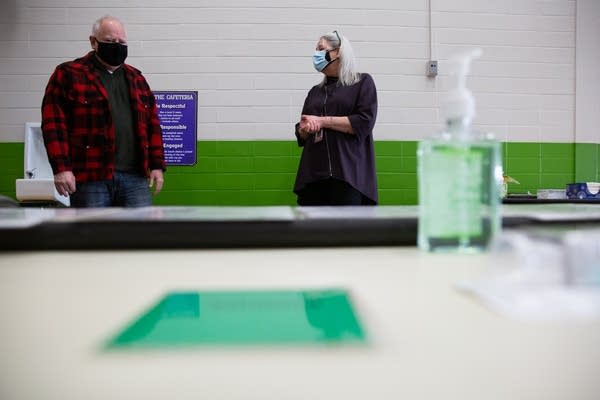
Go Deeper.
Create an account or log in to save stories.
Like this?
Thanks for liking this story! We have added it to a list of your favorite stories.
3 things to know:
Hospital admissions, new cases and active caseloads look good
Deaths averaging fewer than 10 per day for the first time since October
Modest improvement in vaccination pace; weather may change that
Updated: 5:47 p.m.
Minnesota’s COVID-19 numbers show the state on a steady, positive path, with key pandemic metrics continuing to improve.
Known, active cases have stayed below 7,000 for three straight days this week, the first time that’s happened since late September.
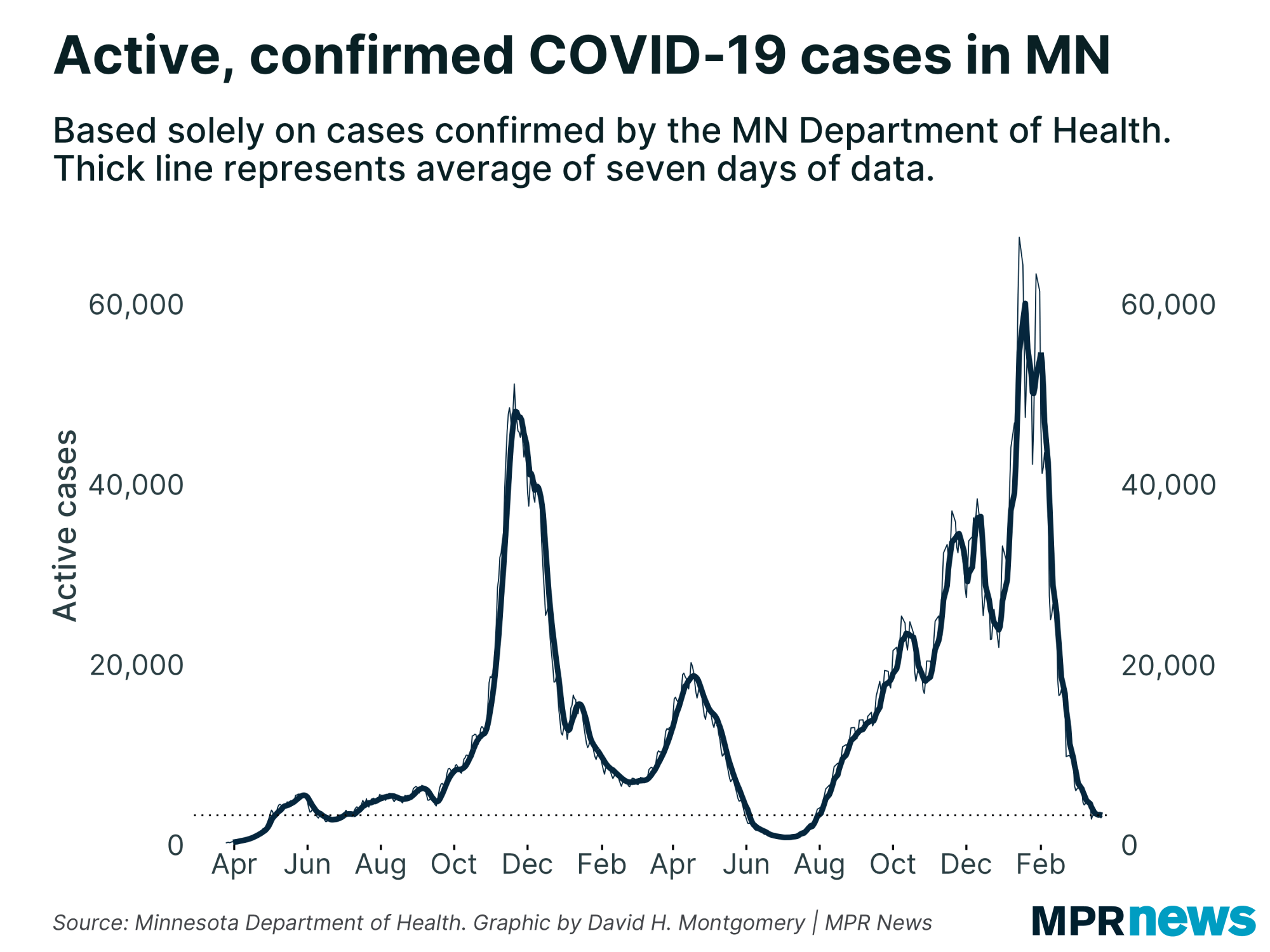
The seven-day hospital admissions trend for people with COVID-19 has also receded to September levels. There were 287 people with COVID-19 in Minnesota hospitals as of Wednesday — the first time since September hospitalization were below 300.
Fifty-four people currently need an intensive care bed, the lowest point since the spring.
Turn Up Your Support
MPR News helps you turn down the noise and build shared understanding. Turn up your support for this public resource and keep trusted journalism accessible to all.
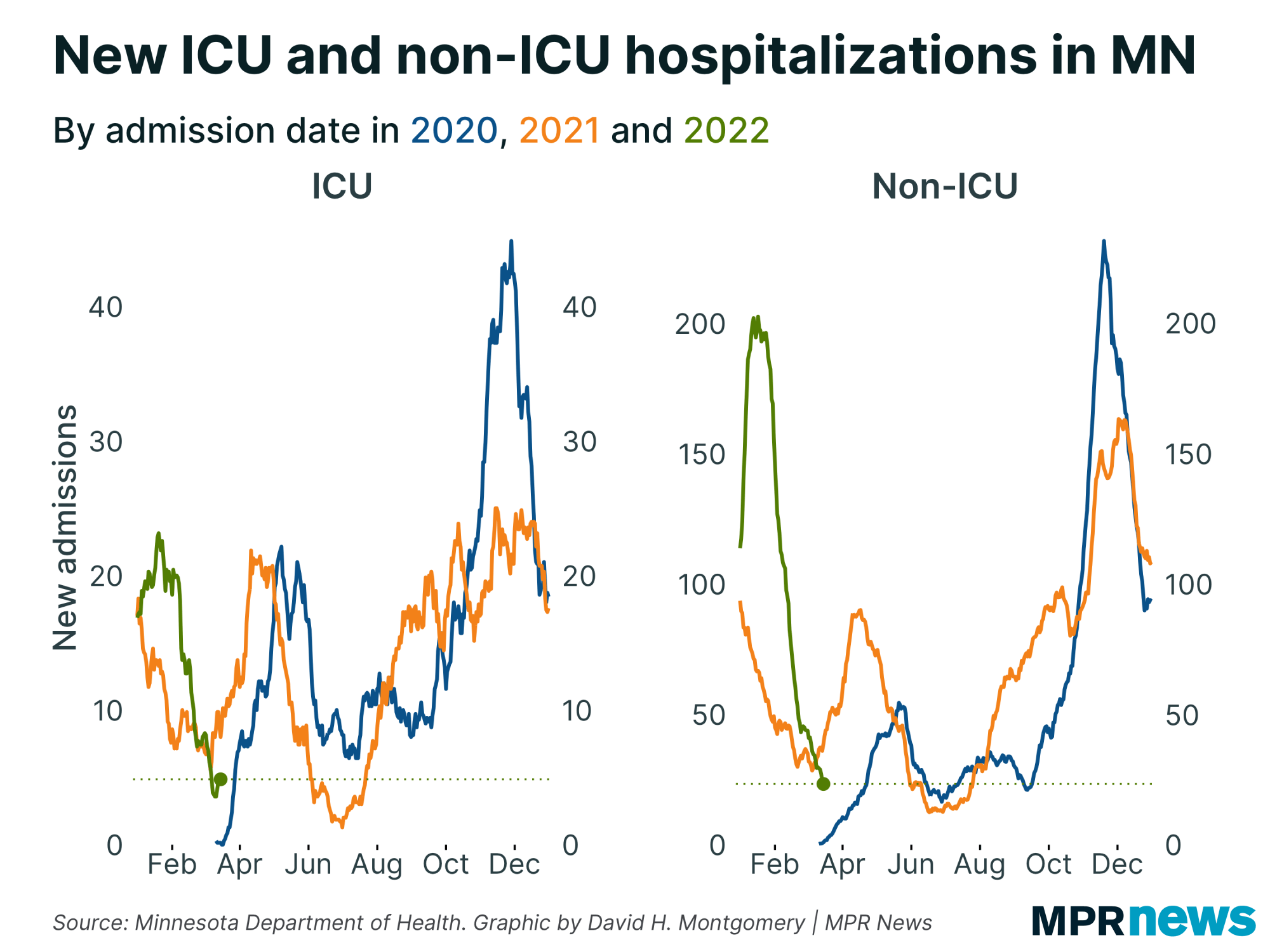
If there’s frustration, it’s with the speed of vaccinations. Even as the state approaches 1 million vaccinations, the pace seems unable to take off after falling and then flattening following a late January surge.
While it’s ticked up since then, the overall trend line isn’t yet showing a sustained upswing. The current seven-day average is running at about 28,300 vaccinations per day. While it’s trending in the right direction now, it’s not back to the levels seen in late January and early February.
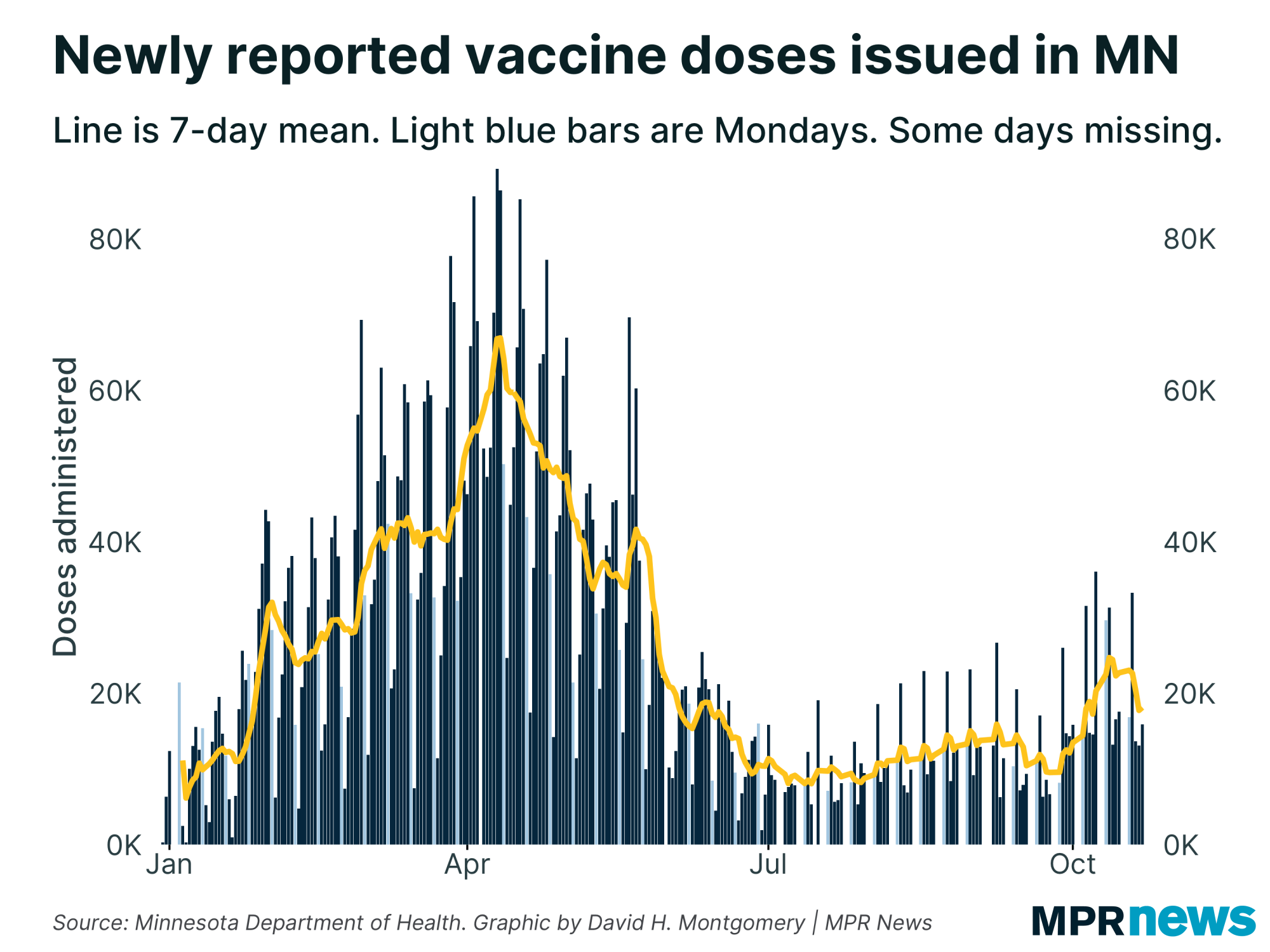
Officials have been emphasizing over the past weeks that the relatively low flow of vaccine supplies from the federal government is the main problem holding back the pace of vaccinations. There’s data to back that up.

The Health Department’s also cautioned that the cold snap now gripping the nation will delay vaccine shipments to Minnesota, potentially depressing vaccination counts in the short-term.
The state has already postponed appointments at two community vaccination sites set for Thursday and Friday.
As of Thursday afternoon, about half of the vaccines headed to the state this week — more than 45,000 — were delayed, most of which were the Moderna vaccine. Those delays mean clinics and appointments across the state have been postponed.
The state is ranked 23rd among states currently in doses administered per 100,000 people, according to data collected by the federal Centers for Disease Control and Prevention.
About 12.8 percent of Minnesotans had received at least one dose as of Tuesday, with about 4.7 percent completely vaccinated. About 38 percent of Minnesotans 65 and older have received at least one shot. At the current rate, it would take until September or October to vaccinate 80 percent of the state’s adults.
Fourteen reported deaths on Thursday raised Minnesota’s toll to 6,404. Among those who’ve died, about 63 percent had been living in long-term care or assisted living facilities; most had underlying health problems.
Minnesota COVID-19 deaths are averaging fewer than 10 per day for the first time since October.

The state’s recorded 476,292 total confirmed or probable cases so far in the pandemic, including 928 reported Thursday. About 97 percent of Minnesotans known to be infected with COVID-19 in the pandemic have recovered to the point they no longer need to be isolated.
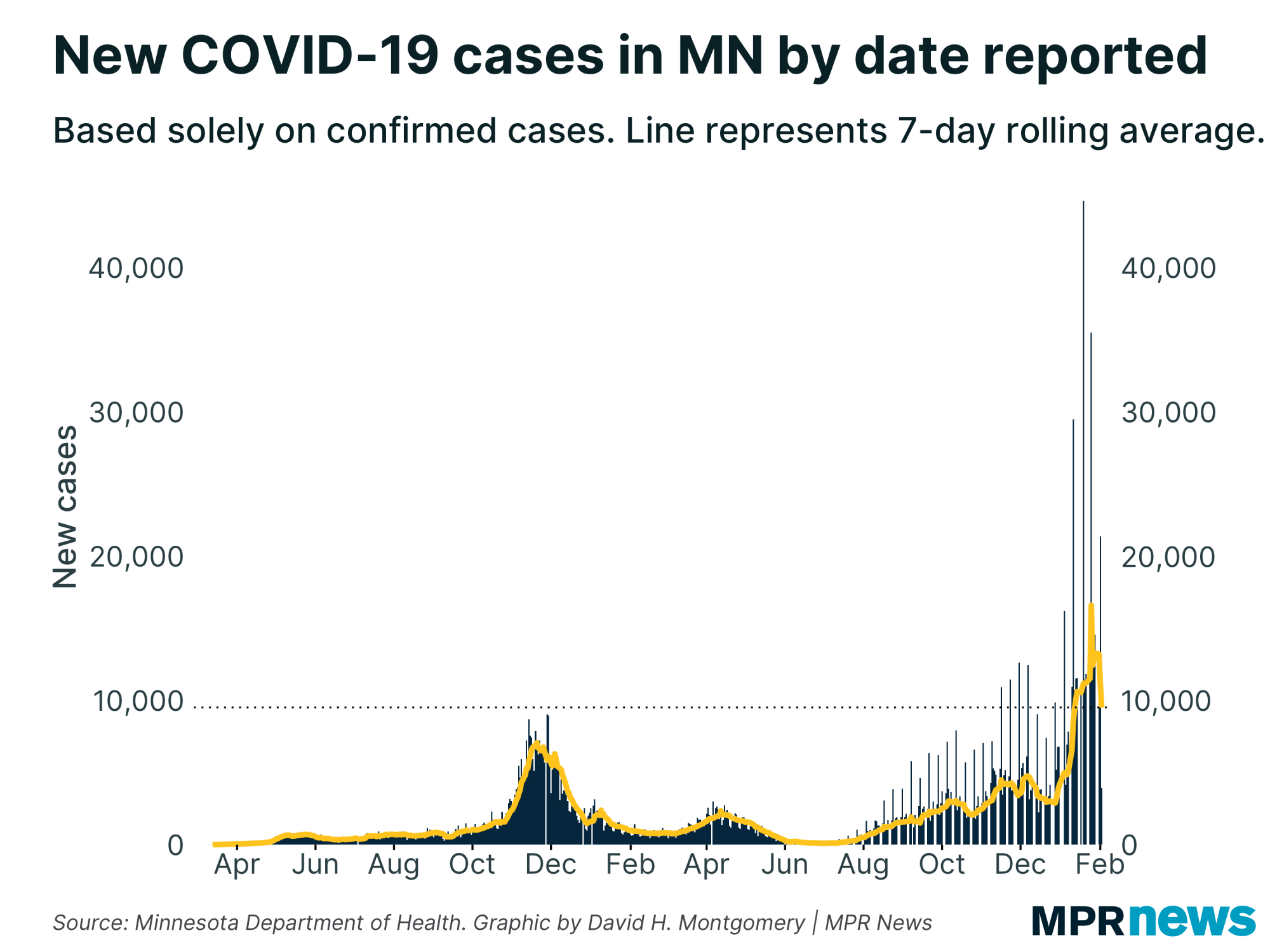
Overall, the trends offer reasons to feel encouraged, enough so that Gov. Tim Walz on Wednesday proclaimed “we’re on our way to ending the pandemic” as he OK’d reopening secondary schools, starting Monday. “We’re beating this thing.”
Still, state health officials continue to monitor new virus strains circulating in the United States, which may be more contagious. Walz and other officials have warned that they could lead to an increase in cases.
Kris Ehresmann, the state’s infectious disease director, reaffirmed those concerns on Tuesday, noting that Minnesota’s now confirmed 40 cases of the U.K. strain here. “We want to make sure we’re not giving a foothold to these variants.”
Michael Osterholm, director of the Center for Infectious Disease Research and Policy at the University of Minnesota, told MPR News on Thursday that the variants are very concerning and it’s unclear whether they evade immunity from vaccination or natural protection.
Cases spread across age groups, regions
People in their 20s still make up the age bracket with the state’s largest number of confirmed cases — more than 90,000 since the pandemic began, including more than 47,000 among people ages 20 to 24.
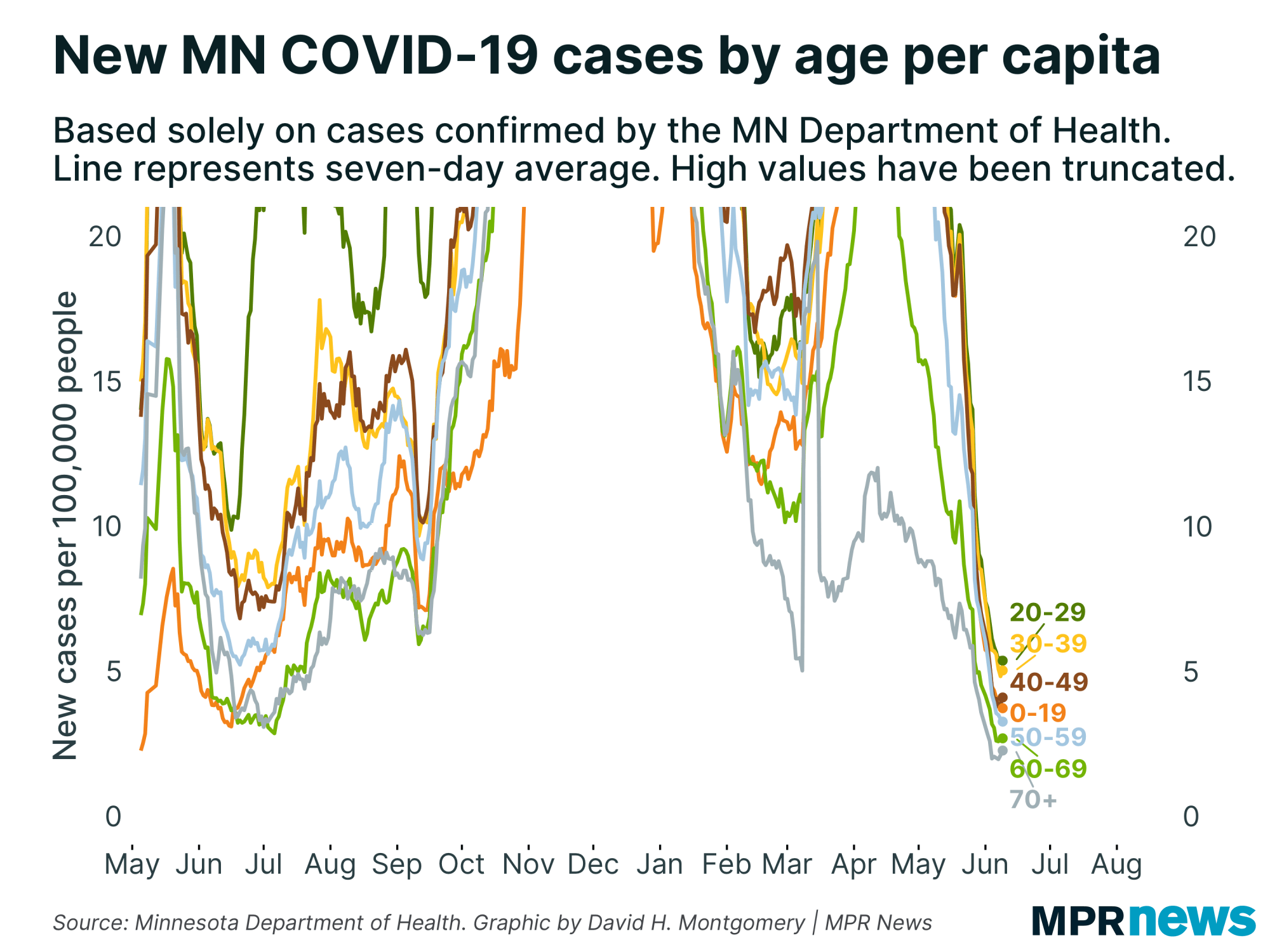
The number of high school-age youth confirmed with the disease has also grown, with nearly 37,000 total cases among those ages 15 to 19 since the pandemic began.
Although less likely to feel the worst effects of the disease and end up hospitalized, experts worry youth and young adults will spread it unknowingly to older relatives and members of other vulnerable populations.
People can have the coronavirus and spread COVID-19 when they don’t have symptoms.
Regionally, most parts of Minnesota are down significantly from the late November, early December spike as well as a January blip.
There has been an uptick in cases in northwestern Minnesota recently, though it’s unclear why just yet.
Caseloads still heaviest among people of color
In Minnesota and across the country, COVID-19 has hit communities of color disproportionately hard in both cases and deaths. That’s been especially true for Minnesotans of Hispanic descent for much of the pandemic.
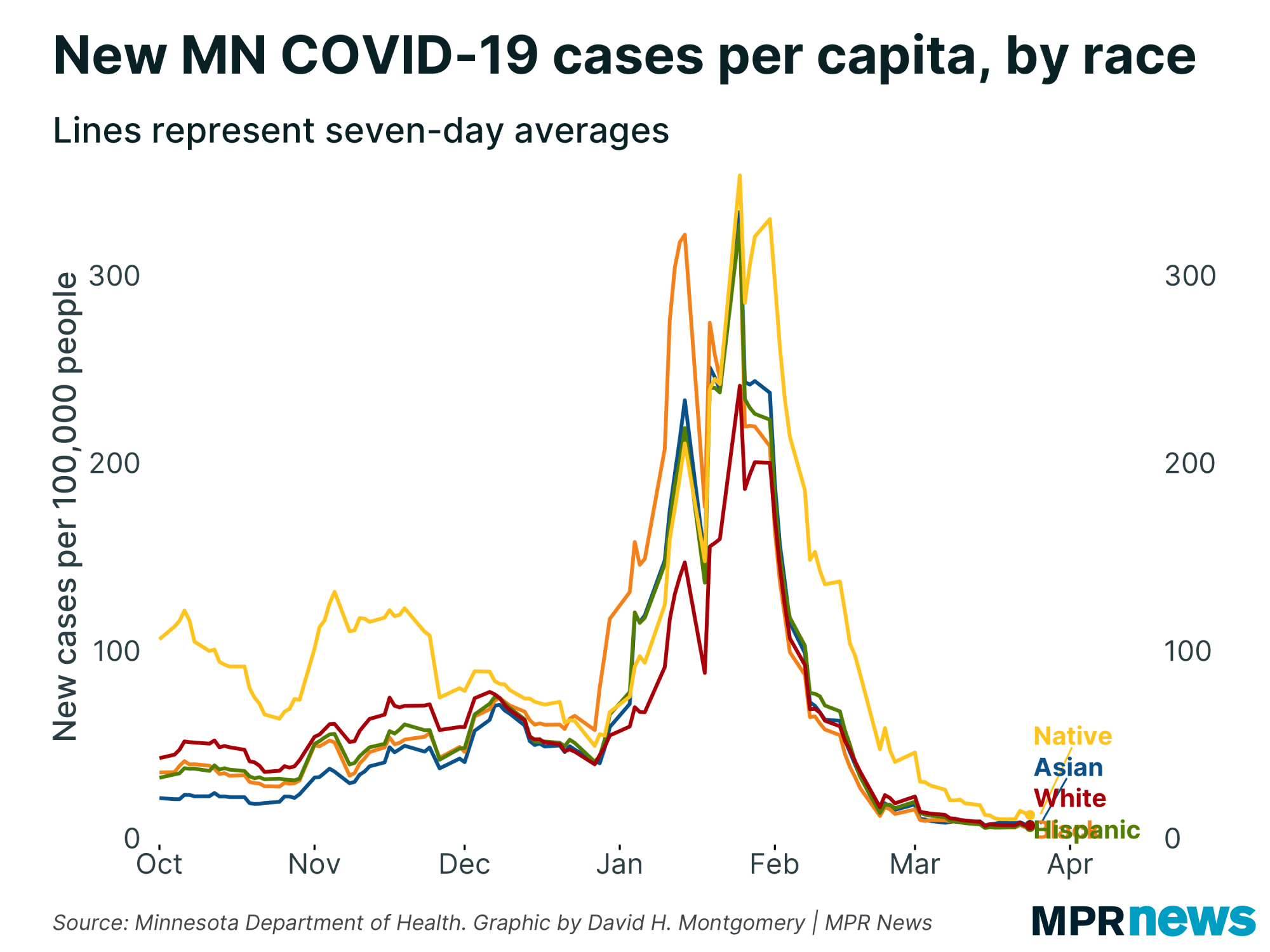
Even as new case counts continue to fall from their late November, early December peaks, the data shows Latino people continue to be hit hard.
Distrust of the government, together with deeply rooted health and economic disparities, have hampered efforts to boost testing among communities of color, officials say, especially among unauthorized immigrants who fear their personal information may be used to deport them.
Malcolm on Thursday also acknowledged the need to ensure that vaccination opportunities be spread equitably.
Malcolm said the state will release data soon regarding vaccinations, race and ethnicity. Officials say they’re trying to improve the quality of data. Per state law, it's been shared voluntarily, and so may be inconsistent.
State health officials discuss Minnesota’s new vaccine eligibility enrollment website:
COVID-19 in Minnesota
Data in these graphs are based on the Minnesota Department of Health's cumulative totals released at 11 a.m. daily. You can find more detailed statistics on COVID-19 at the Health Department website.
Latest developments
Fargo, N.D., extends mask mandate into late March
The Fargo City Commission extended a mask mandate Wednesday that was set to expire on Thursday.
Local public health officials asked the city to extend the mask mandate, which was first enacted in October. The first cases of the more contagious U.K. variant of the virus were reported this week in North Dakota.
Fargo police say checks of businesses in recent weeks found high rates of compliance with the mask mandate. The City Commission will review the mask requirement again on March 22.
— Dan Gunderson | MPR News
Top headlines
New vaccine tool will tell Minnesotans when they can get COVID-19 shots: The tool will alert Minnesotans of their eligibility, connect them to resources to schedule an appointment and provide information on nearby vaccination opportunities. Minnesotans will still have to make their own appointment to get a shot through a vaccine provider.
For Ramsey County homeless, hotel rooms offer safe haven and hope amid the pandemic: Ramsey County officials say they have space for anyone experiencing homelessness to stay indoors. But the fallout from the pandemic is complicating the county's response.
EMS workers adapt and persist, amid stress of pandemic: The pandemic has brought new challenges to already strained emergency medical services in Minnesota. Even the most routine calls carry higher risk — and require more preparation — than before the pandemic. Any call could involve a COVID-19 case.
Minnesota students can return to middle, high school buildings Monday: The decision follows new federal protocols on how schools should operate during the pandemic. “It’s time to get our students back in school, and we can do that now safely,” Gov. Tim Walz said.
COVID-19 causes surge in food shelf visits among older Minnesotans: The state’s largest increases in food shelf use over the last year happened in the Twin Cities metro areas. But in some rural places, there has been a more than five-fold increase in visits among people who are 65 or older.


